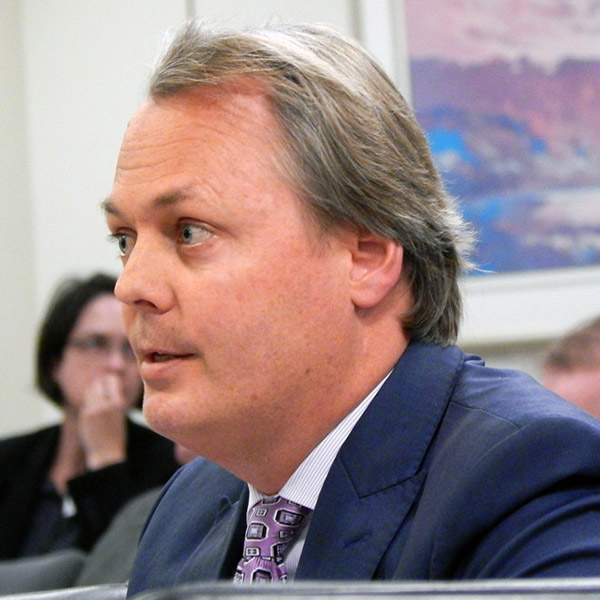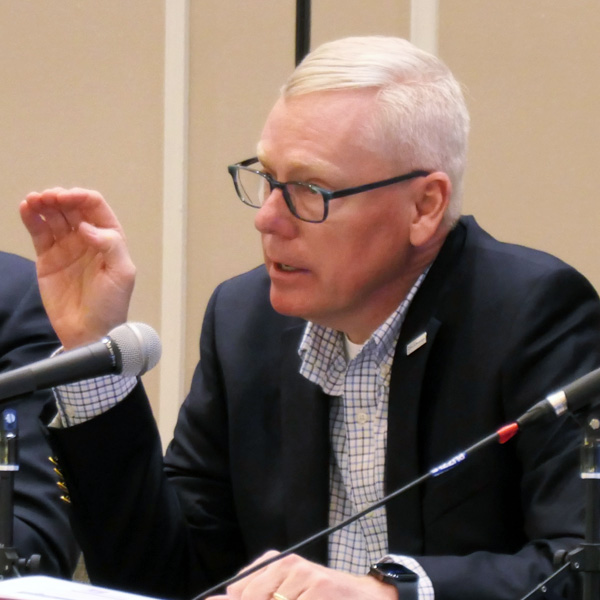Sunrise Wind cleared a significant regulatory hurdle Thursday after the New York Public Service Commission approved a certificate of environmental compatibility and public need for the project planned off the coast of eastern Long Island.
Long Island commercial fishermen initially had raised objections to the offshore wind project but joined in support after nearly a year of negotiations and revisions to the plan.
One PSC commissioner hailed the outcome as a precedent in what will be a series of offshore wind projects churning through the application process in New York, where state law mandates 9 GW of OSW be online by 2035 and where some models predict the need for 20 GW by 2050.
In fact, the U.S. Bureau of Ocean Energy Management earlier in the week issued a draft environmental impact statement for Empire Wind 1 and 2 off western Long Island that found the cumulative impact of offshore wind projects in the New York Bight would have a major negative impact on the fishing industry, to a degree “beyond what is normally acceptable.”
Sunrise Wind
Sunrise Wind is a joint venture of Orsted (OTC:DNNGY) and Eversource (NYSE:ES), which have begun construction of the 124-MW South Fork Wind project in the same vicinity. Sunrise would stand about 30 miles offshore from Montauk and generate up to 924 MW of energy. The cables that would carry that power to land were a point of contention for the Long Island Commercial Fishing Association.
“LICFA raised several concerns at the outset of the case, noting that its constituency of 300 commercial fishers was potentially impacted more than any other group by the submarine cable pathway and landing site,” Michael Clarke, the PSC administrative law judge presiding over the proceeding, said during Thursday’s PSC meeting.
“After 10 months of settlement discussions, Sunrise committed to various design changes that will significantly reduce impacts arising from the project, including those affecting benthic resources and water quality, as well as those potentially affecting the commercial fishing industry,” he said.
A critical change was bringing the export cable onto Long Island with one bore at the landfall site rather than the three that were part of the original plan, Clarke said.
The revised plan also requires substantial outreach and notice to the fishing community during construction, he said.
Sunrise must submit a fisheries compensation plan with a claims process for loss of commercial fishing gear and a monitoring plan that ensures the impact on fisheries and fishing operations are minimized.
In September, Sunrise, LICFA and five state agencies signed off on a joint proposal. With that, Clarke said, there is no publicly stated opposition to the power line.
PSC Chair Rory Christian and several of the commissioners praised the successful effort to bridge a gap and bring New York one step closer to operating an offshore wind industry that will help it meet its climate-protection goals.
Among them was Commissioner John Howard, who called the joint proposal (and the delicate process that yielded it) a model for future planning and review.
He then voted against approving the certificate as a protest against its cost structure. Long Island Power Authority customers would pay 13.5% of its costs, he said, while upstaters would derive no benefit and bear 50% of the cost.
“I’m going to do this every time a project comes up that is based on a load-share ratio financing scheme,” Howard said. “Everybody pays. Sometimes the biggest beneficiaries pay the least. In this case, I believe that is the case.
“If we’re going to ask everyone in the state of New York to pay, that decision should be done not through a regulatory fiat but directly through legislation.”
Howard’s was the sole no vote on Sunrise. He previously has voted against matters involving the Champlain Hudson Power Express line from Quebec to New York City for the same reason and did so again Thursday.
Later Thursday, Sunrise Wind spokesperson Meaghan Wims said:
“Sunrise Wind has reached a major milestone with the approval of a key state permit needed to build this important New York clean energy project. The New York Public Service Commission’s approval affirms that Sunrise Wind can be built while minimizing community and environmental impacts and helping New York State achieve its vision for a 100% clean energy future. We thank the PSC and its staff for its diligent review of the proposed project, which included extensive analyses and contributions by experts across multiple state agencies as well as input from the Long Island community, resulting in an unopposed project submission.”
Wims said Sunrise will next submit its environmental management and construction plans to the state Department of Public Service. Once they are approved, Sunrise can obtain a notice to proceed, allowing construction to start.
BOEM is targeting Dec. 16 for release of the draft environmental impact statement for Sunrise Wind.
Wims said Sunrise expects to be fully permitted at the state and federal level by the end of 2023.
Empire Wind
BOEM on Monday released its draft environmental impact statement on the construction and operation plan submitted for Empire Wind 1 and 2.
That opened a 60-day public comment period that will lead to a final impact statement and inform BOEM’s decision to approve, approve with modifications or reject the plan submitted by Empire Offshore Wind LLC, a joint venture of Equinor (NYSE:EQNR) and BP (NYSE:BP).
Combined, the two wind farms would include up to 147 turbines with a capacity of 2.1 GW. Some 260 miles of inter-array cables and 66 miles of export cables buried 6 to 15 feet below the seabed would connect the turbines to two offshore substations and two onshore substations via three landfall points.
The draft study includes comparison of eight alternative design scenarios that emerged during the review process, each of them tweaking construction techniques or placement of turbines or cables in some manner. The overall projected impacts were the same for all scenarios in every analysis, however.
The draft study found Empire Wind’s adverse impacts would be greatest on fishing, cultural resources and ocean views.
Cumulatively with other offshore wind projects planned in the region, the wind farm would have major negative impact for commercial fisheries and minor to moderate negative impact on recreational fishing due to new structures installed in the ocean that would result in navigational hazards, damaged or lost fishing gear and space-use conflicts.
The cumulative impacts would be “beyond what is normally acceptable” but mitigation, including financial compensation and uniform spacing and layout of turbines, could reduce the impacts.
The cultural impact of the project — its effect on historic sites and archaeologically significant places above or below water — will range from negligible to major, BOEM said, depending on the effectiveness of mitigation measures.
An unobstructed view of the sea is a key part of the heritage of multiple historic districts, for example, and they will lose that once scores of wind turbines dot the horizon, with blades reaching up to 951 feet above the water and warning lights glowing at night. The developers have agreed to use non-reflective white and light-gray paint on offshore structures, and to seek permission to use a hazard light system that turns on only when a plane or surface vessel is in the area.
Among other findings in the draft BOEM report:
- The project generally would have a major disruptive impact on scientific research and surveys, particularly National Ocean and Atmospheric Administration surveys supporting commercial fisheries and protected-species programs. The structures placed in the sea would preclude aerial sampling and affect performance of survey gear.
- The planned upgrades to regional ports for support of construction, operations and maintenance would have major beneficial impacts.
- Air quality would be degraded by emissions caused by construction of the project and by routine maintenance once the project is complete. But emission-free wind power would displace fossil fuel power generation, and the net impact on air quality would be positive.
- Birds would experience minor positive and minor negative impacts: Some would lose shore habitat; some would be killed by spinning rotors; and some would gain increased forage opportunities.
- Minor to moderate economic and employment benefit is predicted, mainly from the creation of a support facility onshore in Brooklyn.
- Environmental justice, a frequently stated goal of New York’s clean energy transition, would gain a minor boost through increased economic activity and see minor to moderate negative impact from the increased traffic, gentrification, air emissions, noise and land disturbances that activity creates.
- Search and rescue efforts might be hindered during emergencies. The project would create underwater reefs favorable to sportfish, which would improve for-hire recreational fishing options, and could increase the number of vessels operating in the area. That would increase the chance of an accident, after which aircraft would have to fly less-effective search patterns, lest they crash into a tower or rotor blade, increasing the likelihood of preventable loss of life.
- Sea turtles would likely experience some impact from the project, but not enough for a population-level impact.
Equinor welcomed the draft report, saying via email:
“We appreciate all the hard work from the Bureau of Ocean Energy Management staff and cooperating agencies to achieve this critical milestone. We look forward to reviewing the Draft Environmental Impact Statement and receiving feedback from the public on the Empire Wind Project. This is a major milestone in our effort to help New York State achieve its offshore wind ambitions.”
The New York State Energy Research and Development Authority, which is shepherding New York’s offshore wind sector into existence, said Thursday in a statement:
“The availability of BOEM’s Draft Environmental Impact Statement for Empire Wind is a major permitting milestone and a culmination of years of research and collaboration to understand and minimize impacts to the environment and to support vital fisheries. We commend BOEM and Equinor on this important achievement that will ensure the project moves forward responsibly in support of New York’s goal for at least 9,000 megawatts of offshore wind by 2035. The development of Empire Wind is expected to bring billions in economic benefits to the state, including investments in frontline and historically underserved communities, offshore wind component manufacturing in Albany, and a staging and assembly facility at South Brooklyn Marine Terminal and will deliver significant amounts of clean renewable energy to New York’s electricity grid once completed.”



